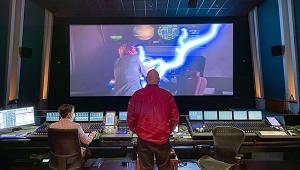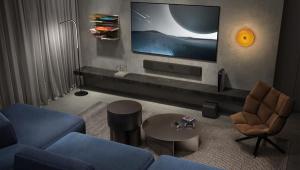8K: The Next Big Thing in Home Entertainment
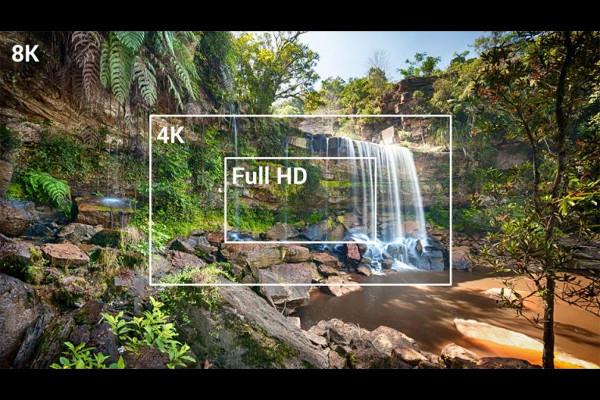
S&V: Let’s begin with an overview of the 8K Association. Who are its members and what are its goals?
 Chris Chinnock: The 8K Association (8KA) was formed at CES 2019 for the purpose of providing education and encouragement to expand the 8K ecosystem. This includes working with professionals on capture, production, mastering, distribution, and display as well as consumers to aid in their buying decision process. On the professional side, we are working to generate seminars, webinars, white papers and industry demos to discuss the state of the 8K ecosystem and its roll out. With consumers, we have already implemented an 8K TV logo certification program that consumers can use to have confidence they will get a high-quality 8K experience. The 8KA was started by leading TV brands but we have expanded our membership to 22 companies spanning the full range of technology and equipment providers from the lens to the living room.
Chris Chinnock: The 8K Association (8KA) was formed at CES 2019 for the purpose of providing education and encouragement to expand the 8K ecosystem. This includes working with professionals on capture, production, mastering, distribution, and display as well as consumers to aid in their buying decision process. On the professional side, we are working to generate seminars, webinars, white papers and industry demos to discuss the state of the 8K ecosystem and its roll out. With consumers, we have already implemented an 8K TV logo certification program that consumers can use to have confidence they will get a high-quality 8K experience. The 8KA was started by leading TV brands but we have expanded our membership to 22 companies spanning the full range of technology and equipment providers from the lens to the living room.
S&V: What does 8K bring to the table that we’re not getting with current 4K technology?
Chinnock: 8K technology is about much more than 33 million pixels. Although the quantity of pixels is four times greater than 4K UHD resolution, the quality of those pixels and the dramatically better visual experience that can be delivered are the real benefit. When whole entertainment eco-systems are driven to evolve with the introduction of new resolution standards, that evolution is never just about resolution.
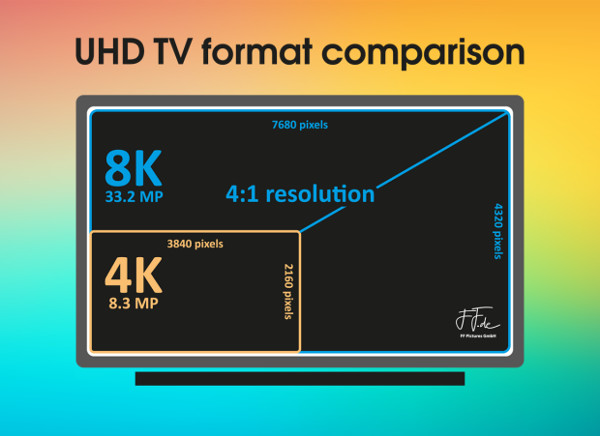
Just like past upgrade cycles to HD or 4K, other standards and features are introduced at the same time that deliver real benefits to content creators and distributors, equipment manufacturers and retailers, and ultimately to consumers. The same benefits will be seen as the 8K upgrade cycle gets fully underway. For video-game producers and Hollywood directors, there will be so much more detail and realism that can be harnessed when telling visual stories. And as those stories are delivered to consumers, they will truly enjoy the benefits of spectacular clarity, contrast, and color that will be possible only with 8K.
S&V: Let’s touch on the association’s 8K TV certification program. Why is it important and what are its key benefits?
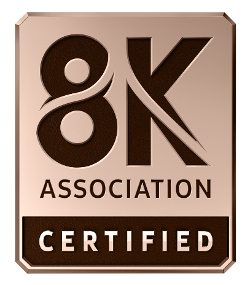 Chinnock: Our goal with the 8K Association Certified logo program is to offer a logo that consumers can look for knowing that any 8K TV that carries the logo will provide a high-quality 8K experience. To be sure this logo delivers on this promise, we carefully reviewed a number of TV performance specifications and interfaces. Our aim is to set the bar sufficiently high to eliminate performance levels that in our estimation do not offer the best 8K experience. The logo program is backed by testing to be sure certified TVs meet the spec in order to carry the logo, as well as a market audit program to further ensure compliance.
Chinnock: Our goal with the 8K Association Certified logo program is to offer a logo that consumers can look for knowing that any 8K TV that carries the logo will provide a high-quality 8K experience. To be sure this logo delivers on this promise, we carefully reviewed a number of TV performance specifications and interfaces. Our aim is to set the bar sufficiently high to eliminate performance levels that in our estimation do not offer the best 8K experience. The logo program is backed by testing to be sure certified TVs meet the spec in order to carry the logo, as well as a market audit program to further ensure compliance.
S&V: When combined with high dynamic range (HDR) technology and strong content, the best 4K/Ultra HDTVs deliver a compelling experience. Skeptics ask why we need 8K, claiming it's overkill. What’s your comeback?
Chinnock: Native 8K content is almost always coupled with HDR and while this native content is rare, when properly prepared and delivered it does offer a stunning experience on Certified 8K TVs. Some will argue this may not be much better than a 4K/HDR experience and for some people that may indeed be true. However, our experience suggests that the visual impact of 8K HDR vs. 4K HDR depends on a number of factors. These include how far from the screen you sit, the size of the screen, the nature of the content, how well it was prepared and delivered, and the quality of the eyes observing the images. Some tests have shown that for a given screen size and viewing distance, the additional pixels in an 8K screen reduce the digital artifacts in the picture leading to a cleaner image that is more realistic and more emotionally impactful — more so than a 4K version at normal TV viewing distances.
Some will argue that more realism is not necessarily a goal of some content creators, but it is hard to argue that creating more emotional impact is not beneficial. 8K screens are clearly needed as screen sizes grow in order to maintain pixel density. And, with the additional benefits of realism and emotional impact, 8K is not overkill.
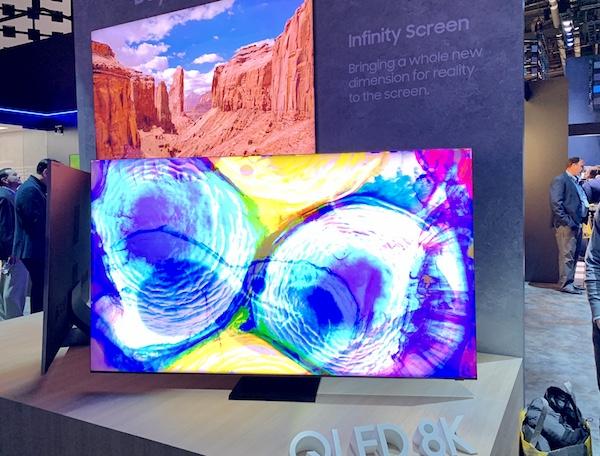
S&V: Over the past year or so, Samsung, Sony, and LG have brought 8K TVs to market and sets are on the way from Hisense and TCL. So we have hardware but still have quite a ways to go on the content side. Where do things stand and when do you expect to see creators ramping up content production in a significant way?
Chinnock: The 8K ecosystem today is in a pretty similar place to the 4K ecosystem seven or eight years ago. When 4K TVs were first introduced, those TVs were distantly separated from most mainstream TVs of the time. And when 4K TVs were first introduced, there was no 4K content that was easily accessible to consumers. A lot has changed since then. Big-screen TVs aren’t available in resolutions lower than 4K. And while 4K content is still expanding today, there are many, many options to enjoy 4K entertainment.
The evolution of 8K will follow a similar path. With the launch of next-gen game consoles later this year, there will instantly be millions of devices in consumer’s homes ready to feed 8K games to 8K TVs. And we expect more content creators to begin to deliver 8K following the lead of TV brands, game developers, and consumers that will expect 8K entertainment at home.
S&V: What role does HDMI 2.1 — including things like ultra-high-speed HDMI certification — play in the 8K ecosystem? What’s most important and what should TV shoppers look for?
Chinnock: Consumers who purchase an 8K TV should definitely buy a new ultra-high-speed HDMI cable. This ensures that the cable is capable of delivering 8K content at 60 frames per second (fps) for the best image quality. These cables also support 4K at 120 fps for the best gaming experience as well. Like the 8K TV Certified logo, HDMI has the Ultra High Speed HDMI Cable logo to signify cables that have undergone rigorous testing, so look for that at retail.
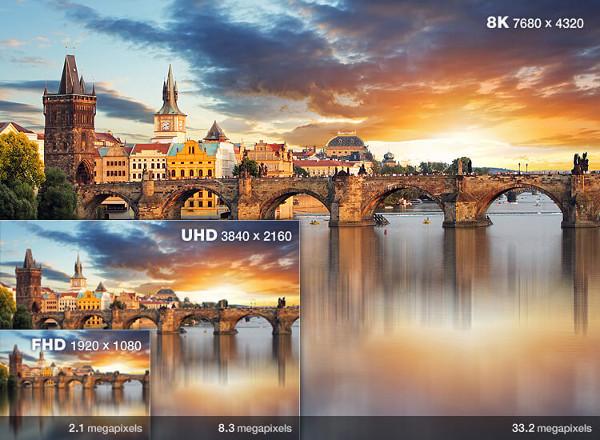
S&V: Savvy retailers wowed customers (even sold TVs) by hosting Super Bowl viewing parties featuring the game upconverted to 8K on state-of-the-art TVs. The ability to upscale 4K (and lesser) content to 8K will be critically important for the foreseeable future. What’s your impression of current upscaling technology and its ability to convey convincing “8K” images?
Chinnock: Another big difference between the 4K transition and the 8K transition underway now is the advancements made in upscaling or image restoration. Today, we now have artificial intelligence (AI)-assisted upscaling image restoration technologies that can make lower resolution images look extraordinary on an 8KA Certified TV. That means that even without native 8K content, users can still benefit from the picture quality of the 8K image. Plus, 8K TVs represent the best that TV brands offer in their line up with the most up-to-date sound, image processing, and user interfaces. All these combine to offer a quality 8K experience even on lower resolution content.
S&V: What’s happening with 8K streaming technology, which, of course, is also essential for success?
Chinnock: We believe that like 4K, streaming will lead the way with 8K adoption. The major streaming service providers are not offering an 8K service yet, but we see smaller players entering the market first, paving the way for the bigger players later. 8K will really take off when a major streamer offers a service, which will likely be within the next two years, in our opinion. One of the challenges with 8K streaming is the increased bandwidth needed for native delivery. Fortunately, there are a number of codecs that can reduce the bandwidth for more economical delivery.
The standard codec for 8K today is HEVC (high-efficiency video coding), but AV1 is already being used on YouTube for 8K content and the MPEG-based codecs VVC (versatile video coding), EVC (essential video coding), and LCEVC (low complexity enhancement video coding) are all nearing finalization. This will further expand economic delivery of 8K. And, just as AI-assisted upscaling helps with image restoration in the TV, AI-assisted encoding is coming as well. This will allow content to be mastered in 8K, but smartly delivered in a 4K package for smart upscaling at the 8K TV. Tests have shown such methods can deliver image quality close to native 8K delivery, which may well lower the bar for commercialization sooner than most expect.
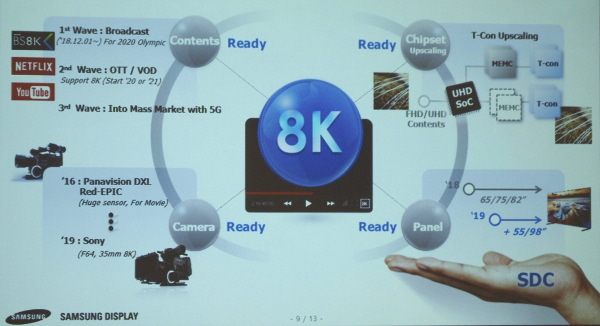
S&V: Some industry pundits say gamers are early winners in the 8K game. Do you agree?
Chinnock: We do believe gaming will be an important use case for 8K TVs. We are not sure how many games will be natively authored in 8K, however. We suspect that 4K/120 will be a more popular option, with the upscaling capabilities of 8K TVs offering a much-improved image. Gamers will find the performance of these new consoles mind-blowing — especially on big 8K TVs.
S&V: Building public awareness for 8K is another essential ingredient for success. The 2020 Tokyo Olympics were expected to be a watershed moment for 8K broadcasting but the games have been pushed to 2021 with the possibility of being cancelled altogether. What events (sports or otherwise) are on the horizon that could be used to showcase 8K technology?
Chinnock: If you look back at the development history of 4K content distribution, live sports was not the leading source behind the growth of 4K content. Streaming services and game consoles were the leading sources of 4K content as the 4K eco-system developed. It’s true that the Olympics, Super Bowls, and other flagship sporting events can drive big visibility and awareness around higher resolution. But the traditional live-TV infrastructure typically used to deliver major sporting events is complicated and slower to evolve than the distribution networks used by streaming services and the console platforms used by video-game developers.
Some broadcasters like NHK in Japan and others have made big investments over the years to build the infrastructure required to distribute live 8K video. NHK has been broadcasting in 8K in Japan for more than a year and were going to be distributing this summer’s Olympic Games in 8K throughout Japan. But NHK is more of an exception among traditional broadcasters in their deployment of 8K content distribution. Sports broadcasters are already using 8K cameras as they can deliver multiple HD or UHD feeds and eliminate other cameras, saving money. While 8K content is not being broadcast, the stage is being set for 8K special events, which will help build awareness of 8K.
The 8KA will be partnering with all parts of the 8K eco-system to educate consumers about the complete benefits of 8K resolution — including 8K upscaling, native 8K content, and all of the associated benefits of clarity, contrast, and color.
For more on 8K TV technology, including upcoming events, visit 8kassociaton.com.
Related:
8K Association Launches TV Certification Program
HDMI Forum Announces Ultra-High-Speed Cable Certification Program
CES 2020: Sony 8K TVs Adapt to Rooms, Add Next Gen TV Tuner
CES 2020: Samsung Expands 8K Lineup, Unveils Rotating 4K TV
CES 2020: LG Doubles Down on 8K with Huge Screens, Thin OLED
Samsung Launches 2020 QLED Line of 4K and 8K TVs
LG Announces Pricing for 2020 4K and 8K OLED TVs
LG Starts Rolling Out 2020 TVs, OLED Leads the Way
8K Association Announces Key TV Performance Specs

